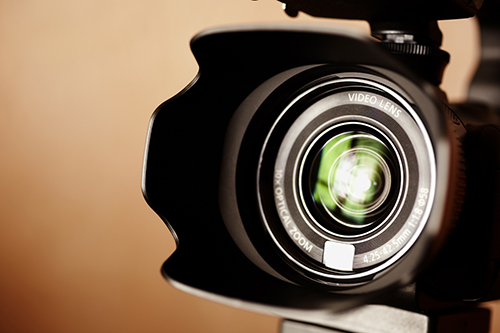ATD Blog
Slick Versus Authentic Video
Wed May 15 2013

There’s a conversation that comes up time and time again about DIY video. I call it the “slick versus authentic” debate.
It goes something like this: “Now that it’s so cheap and easy for anyone to make video content for learning, we mustn’t over-produce video because it will look too slick.”
People Don’t Trust Slick Video
Of course “slick video” means different things to different people. However, it’s generally used as a contrast to highly polished content that looks like it was produced for television as opposed to a more rustic, homespun production. Think of visual elements like spinning graphics, fancy transitions, and actors or models that look a little more perfect than in real life. And props that look more Hollywood than a home movie.
The argument goes that slick video is not seen as authentic. Instead of extensive storyboarding and planning, protagonists urge us to “embrace serendipity.” You may hear, “Just shoot when you can … it doesn’t matter if the picture is not well-lit, the camera shakes, or the audio is lousy. It’s what’s in the picture rather than how it was shot that counts.” Or, “Don’t worry if the final version is full of jump cuts...”
What’s Wrong with Slick Video?
Of course not everyone agrees. In fact, some people hate “authentic video” because it doesn’t aim to achieve high standards. The “pro-slick” folks argue video must look polished and professional for viewers to take it seriously.
“Video by chance” undermines the brand, they say. It’s distracting and takes more time to understand. And you sometimes have to watch it more than once to get the complete concept. Things that cause viewers to re-play their video include poorly-lit scenes, pictures out of focus, and shaky-cam content that was shot without tripod.
So Who’s Right?
The arguments for and against both slick and authentic video can run for hours. Indeed, I’ve consumed many pints of beer over this conversation in many parts of the world. When you consider their arguments carefully, both sides make important points.
After all, spinning graphics and verbose use of special effects, such as fancy transitions and a heavy reliance on green screen, are more often than not overkill for learning video. Conversely, shaky-cam video shot without a tripod or pictures that are out of focus or poorly-lit are also bad. These slow the speed of comprehension.
Adding to the argument is the notion that some people say you should only use high-end cameras, while others say we need to use iPhones and iPads more. Both have good arguments.
It’s the Wrong Argument
So I’ve had this conversation many times in many different countries. But I want to ask: Is this really the right conversation to have? I think that arguing whether videos should be slick or authentic is a waste of time for learning professionals.
We need to be asking, “Does this video technique or narrative device facilitate learning?” And secondly, “Am I using the best method of visual communication possible to make this content easy to learn?”
I have found that that a lot of people use the “slick versus authentic” argument as an excuse for poor production skills or undisciplined editorial decision-making. And I’ve met countless people who did not spend the time to think their video through and use the excuse, “Oh it’s more authentic this way.” (Oh, and by the way, less interesting and more difficult to follow.)
Meanwhile, I see many people using mindless and sometimes nauseating special effects that add nothing to their message—all on the basis the video “has to look polished.”
I’ve got news for people in both camps: If you want your video to be worth its investment of time and money it needs to be both authentic and slick...genuine and polished…real and packaged.
The Important Questions
There’s not a lot of value asking whether our didactic video is slick or authentic. As learning professionals, we need to ask if it aids learning. Sometimes slick will aid learning. and at other times it will undermine it. Likewise, edgy hand-held video that shakes so much it makes us seasick or is so poorly lit we have to watch it several times to make sense of it will not aid learning. But at other times it will give insights that no contrived video can achieve.
Let’s forget whether video has to be shot on a prosumer camera or iPhone. Let’s not worry about whether shaky cam is the right artistic style or not. Instead, let’s ask the simple question, “Does it aid learning?” Then, let’s follow that question with, “Is this the most effective visual communication method to make my learning quick and easy to understand as well as easy to remember and apply?”
